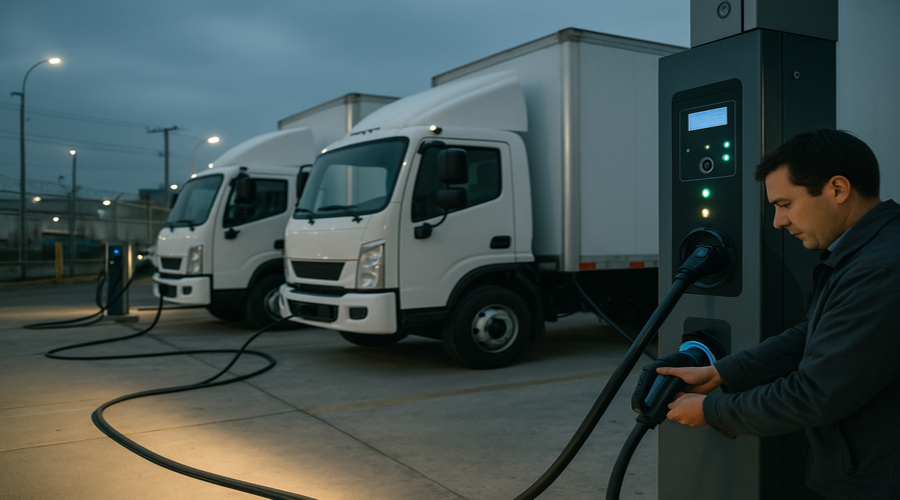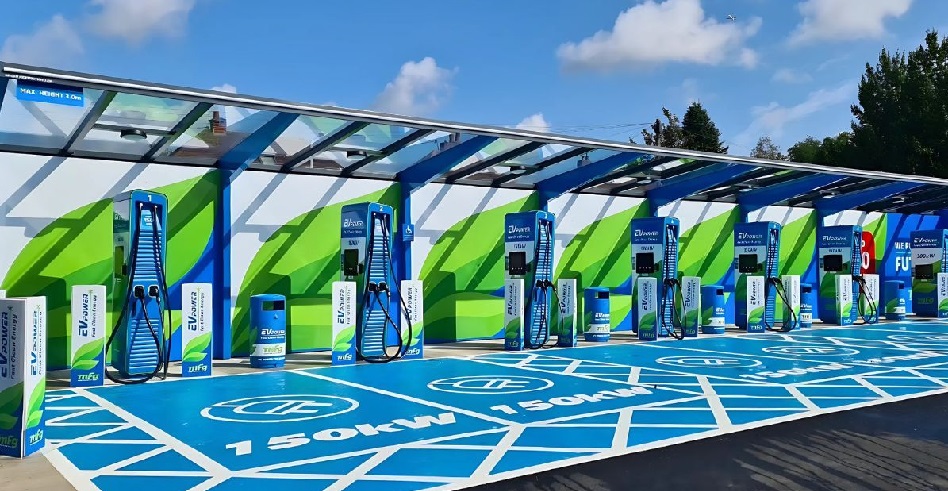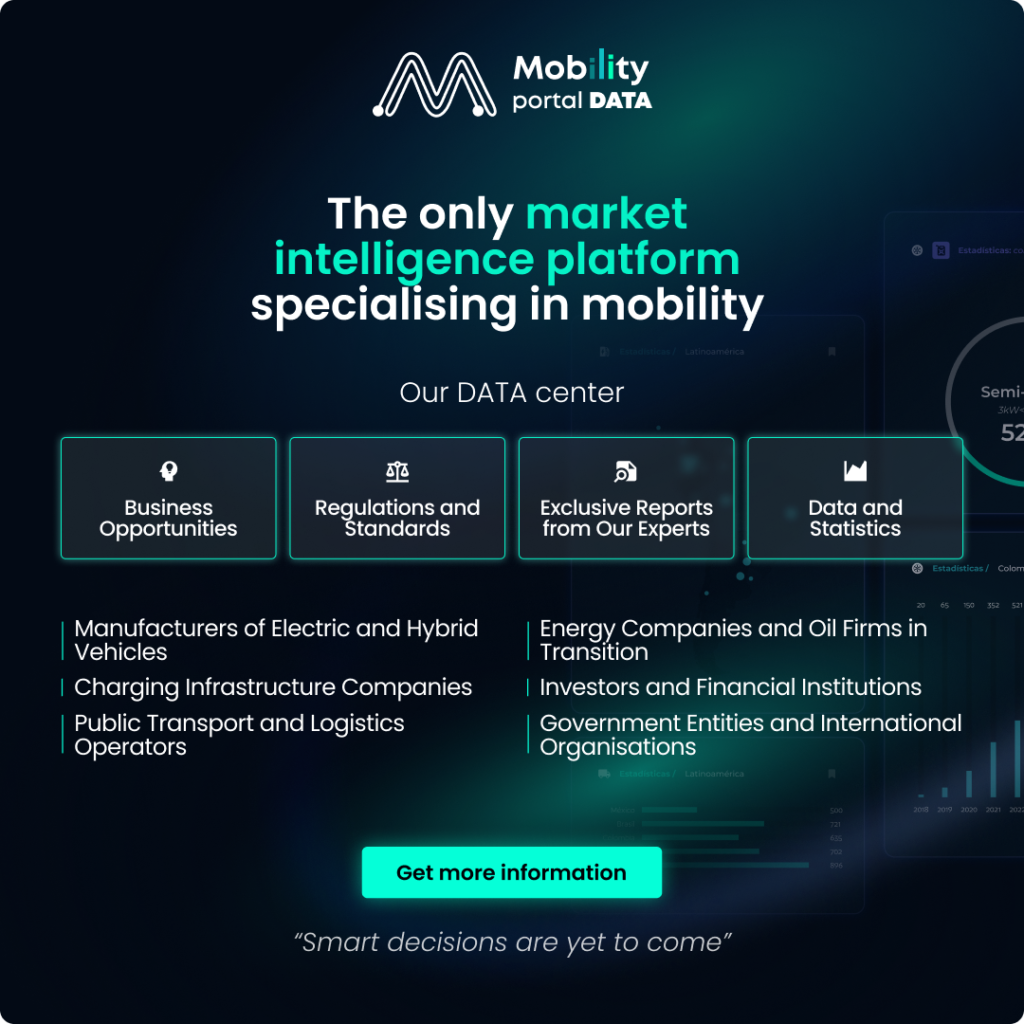In Latin America, fleet electrification no longer depends on the vehicle or its autonomy but on charging infrastructure that is still “crawling” in terms of regulation, available power, and inter-institutional coordination.
For companies seeking to make the leap, the real challenge starts with the question: “Where do I charge it?”
“One of the main bottlenecks is the availability of electricity on-site, especially in urban yards where the infrastructure was not designed for high consumption,” warns Constantino Rodríguez, Commercial Head of VEMO, the Mexican company that designs and installs integrated solutions for electric fleets in the region.
In other words: the grid is insufficient, and before installing a charger, you need to negotiate kilowatts with the distributor.
Installing a charging system for a fleet in Latin America is a “highly complex surgery” that begins with a precise diagnosis, including contracted power, available physical space, fleet’s operational model and possible charging times.
Rodríguez explains: “Key factors include the contracted and available power on-site, which will determine the type and number of chargers that can be installed; the type of chargers — Level 2 or DC fast charging — according to the operation and vehicle downtime; the distribution of the charge to avoid demand peaks; and the available physical space, not only for the chargers but also to allow for efficient operational circulation within the yard.”
In countries such as Mexico, Colombia, or Chile, where public and logistics transport is beginning to electrify, access to power has become as coveted as it is scarce.
In many cases, companies must finance grid reinforcements that do not belong to them, with no clear incentives or guaranteed connection times.
Software to avoid improvisation
The second link is software. In electric fleets, improvisation is costly. Autonomy, shifts, personnel breaks, and electricity prices intersect in a single equation.
“Software is the operational brain of the electric fleet, as our ZEE platform does,” explains Rodríguez.
This platform enables the coordination of charges according to priority, scheduling time windows for off-peak tariffs, issuing alerts for failures, and making operational decisions in real-time.
“It also manages available energy, prioritises which vehicle is charged first, monitors consumption, schedules charging windows during cheaper hours, and detects failures or inefficiencies that help extend battery health.”
In contexts where electricity tariffs are still flat — as is the case in most Latin American countries — software becomes more important as a preventative tool than as an economic optimiser for fleet operations.
Bureaucracy and standards: the silent brake on fleets
Barriers are not always technical. Often, they are paperwork. “Coordinating with distribution companies for load expansion or new services can take weeks or months,” warns Rodríguez.
In countries like Peru, Ecuador, or the Dominican Republic, equipment homologation is still tied to unclear processes or non-existent regulations.
In Brazil, the National Electric Energy Agency (ANEEL) has enabled more agile regulation for the installation of charging infrastructure in private properties, which is driving electric fleet projects.
In Colombia, the Mining and Energy Planning Unit (UPME) defined minimum technical requirements for charging stations in 2023, but regulatory gaps remain regarding interoperability and standards.
One of the most critical points is the standardisation of connectors and protocols.
While countries like Chile and Colombia predominantly adopt the CCS Combo 2 standard, other markets still have different formats — CHAdeMO, GB/T, Type 1 — complicating multi-vehicle operations.
Interoperability, more than an advantage, is a basic necessity for electric fleets with urban and interurban routes in Latin America.
The need for a multidisciplinary approach
VEMO works with last-mile fleets, public transport, and leasing companies. In this experience, they identified a common pattern: no electrification project is linear.
“Local regulatory complexity, high initial costs, and lack of technical experience in quality installations, as well as issues in selecting the best vehicle and specialised advice, are encountered,” Rodríguez notes.
That is why they forged strategic alliances in Latin America like the one they have with TIP México, to integrate vehicles, energy, software, and maintenance into one solution.
Along these lines, in other countries in the region, electrified fleet cases often progress with international financing, public-private agreements, and technical planning from scratch.
“Without coordination with the distributor and without load studies, there is no viable project,” warns a sector expert consulted off the record.
Clear rules, differentiated tariffs, and political will
“A clearer and more agile regulation for fleet charging projects is urgent, especially regarding permits, licenses, and grid connection,” Rodríguez stresses.
He also proposes that a differentiated electricity tariff for fleet charging be established, with incentives during off-peak hours, something that already exists in California and some areas of Europe.
He further insists that “municipalities and authorities must support urban policies that include electric mobility within their infrastructure plans.”
This implies everything from tax exemptions to changes in urban design to allow for charging yards and safe electric circulation.
DISCOVER MOBILITY PORTAL DATA
Discover Mobility Portal Data, a new exclusive market intelligence platform offering reliable data and key reports to support smart decision-making across the automotive sector — covering both combustion and electric vehicles, as well as charging infrastructure.
Research, trend analysis, and neatly organised statistics presented with clarity and precision, alongside up-to-date insights — all just one click away. With Mobility Portal Data, good decisions are on the horizon.
READ MORE
-
Chris Heron: “At EVS38 E-Truck manufacturers proved they are ready”
Brands such as Volvo, Mercedes-Benz, Scania and IVECO showcased their latest E-Trucks. Additionally, the first public demonstration of the MCS charging system took place at the Milence hub in Landvetter. However, there are still barriers to overcome. What are they, and what does E-Mobility Europe propose to address them?
-
Estonia is building its largest and most powerful EV charging station
For EVs to become a part of everyday life for most Estonians, the development of charging infrastructure needs to advance much more rapidly. That’s why 62 Olerex service stations will be equipped with 170 fast and ultra-rapid chargers, with a combined capacity of 18.5 MW.
-
More power: MFG expands its charging network in London by 30%
The latest upgrades include the expansion of 3 existing sites in London, 7 new ultra-rapid EV power hubs, and ultra-rapid chargers ranging from 300 to 400 kW. The expansion supports MFG’s strategic goal to build a nationwide network of ultra-rapid hubs.









